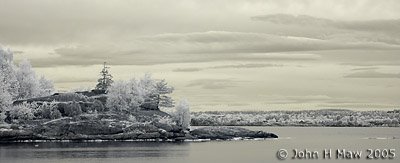Tripod or hobby-horse (both, actually)

Something of an annoyance is the number of "tripod looking" devices on the market that don't do what a tripod should. OK. Why would you buy the thing in the first place? Normally with the intention of steadying the camera and getting sharper photos. Some materials are more suitable that others for making tripods. Metals are good. Most are fairly rigid, but some of them are also heavy. Commonly aluminium is used in tripods because it is quite light in relation to it's strength. Magnesium is also used in some more expensive tripods for the same reasons, only more so. In recent years carbon fibre has become popular. There is a cost penalty to bear, but where a tripod is going to be carried for several hours the benefits of it's very light weight and high strength may be worth it.
There is a material which should in most cases not be used for making tripods. PLASTIC. Yes, it is light. Yes, it is cheep. But no, it is not rigid and therefore no good for tripods. Now there are parts of a tripod that do not suffer if plastic is used. Adjustment knobs (assuming that the screw part is metal) are best made from the stuff. The little feet at the ends of the legs are also fine.
In general the higher up the tripod a component is, the more any lack of rigidity will be noticed. That means that in particular plastic used in the making of the head is undesirable, if not totally defeating of the reason for buying the thing in the first place. Yet this is where these pseudo-tripods often have the highest concentration of plastic. This is clearly because it is much cheaper to make a head out of plastic than aluminium, and after all it still looks like a tripod. Don't be fooled. The price you don't pay in the shop is the price you pay with your photography.
Now time to clear up one more point. How much this affects you depends on what type of camera and lens you intend to put on the tripod. If you will only mount a small compact camera without extra lens attachments then these tripods are for you (except in high winds). But the heavier the camera and the more out of balance the whole thing is the more important it is to exclude plastic wherever possible.
At this stage I would like to recount something that happened to me quite a few years ago. I had travelled to stay with a friend in Spain, and I had taken with me a quite heavy medium format camera (Bronica GS1) and lenses. On one day I decided to take some photos of my friend in the park. I set up the camera on my tripod and fitted the 250 mm lens (equivalent to about 125 mm on a 35 mm camera). This lens is a physically long lens and the combination looks more like light artillery than photo gear. It is also very unbalanced as there is no tripod collar on the lens, so it is attached at the base of the camera.
I took the shots and processed them when I was back in England. I was very upset to find that they were not at all sharp. After all, I had used a tripod (and a remote shutter release). I was very puzzled. I had used this lens quite extensively in the studio (with flash) and found it to be very sharp. All the same I made a series of tests. Eventually I realised that the problem was not the lens, but the tripod. It was a good quality tripod from a good company. It turned out that they had "upgraded" the design of the tripod and changed the centre column design, fitting a telescopic column fastened by a plastic collet. This meant that the column could be extended very quickly. The original column design had been an all metal affair that had needed to be bolted together to extend its length (a slower procedure). As the older design of column was still available as a spare part I was able to "downgrade" my tripod. The problem never returned. I still own and use that tripod today, and it has been used with everything up to a 5x4 Sinar P.
The image above is an infrared shot taken in Norway in 2005 (with a tripod).

0 Comments:
Post a Comment
<< Home